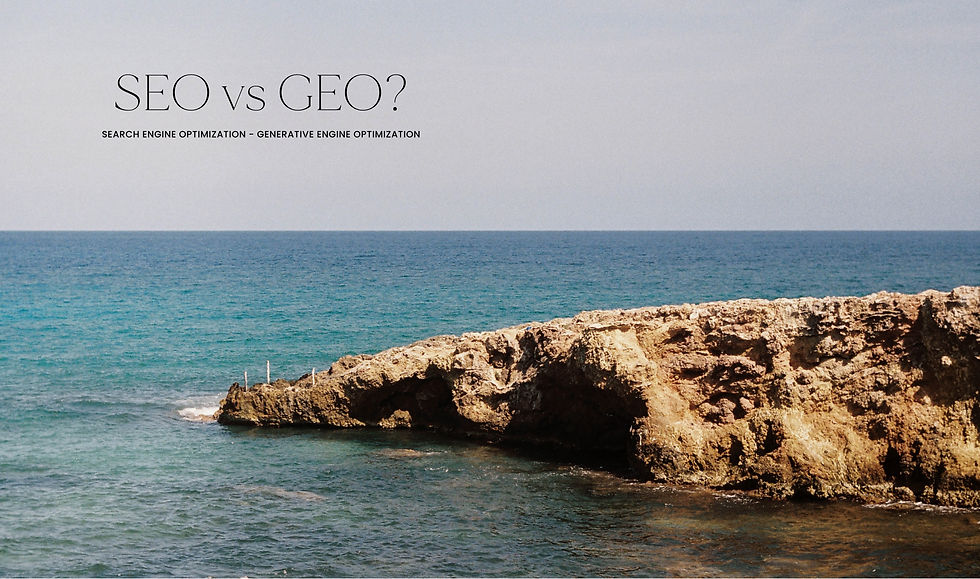If SEO helps you get found, GEO helps you get chosen.
- hello630762
- Jul 15
- 2 min read
The digital world is shifting fast. While SEO (Search Engine Optimization) is still essential to rank well on traditional search engines, a new layer of visibility is becoming just as important: GEO, or Generative Engine Optimization.
But what is GEO and why does it matter?
GEO focuses on how your content is picked up, understood, and reused by AI engines. While SEO is about ranking high in search results, GEO is about becoming a trusted source for AI tools that answer people’s questions directly. That means ensuring your website’s content can be scanned, interpreted, and selected by large language models (LLMs) like ChatGPT, Perplexity, or Google Gemini.
Understanding what GEO is, though, is only part of the picture. Let’s look at what it’s meant to achieve.
The goals behind GEO
GEO aims to increase visibility, attract more targeted traffic, and build long-term credibility. It’s not about writing for AI but about making your content clear, structured, and accessible to AI. Think of it as making your website “readable” for LLMs, so they can use it as a source when users search for something specific. This includes anticipating the kind of queries people might ask and making sure your content offers relevant, human answers.
GEO & SEO: same mindset, different logic
SEO and GEO share some DNA: both are about clarity, relevance, and structure. But their mechanics differ.
SEO optimizes for search engine crawlers and page rankings.
GEO focuses on making your content usable in generative answers where there’s no list of links, just one response.
A strong strategy needs both: one gets you seen, the other gets you cited. The two are not in competition, they’re complementary. And as digital behavior continues to evolve, both are essential.
We believe that visibility today means more than just ranking high. It’s about relevance - both in search and in conversation. SEO and GEO each play their part.

